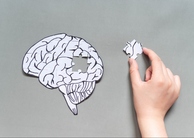Pathological Withdrawal Syndrome: A New Kind of Depression?
By
2022, Vol. 14 No. 04 | pg. 1/1
IN THIS ARTICLE
KEYWORDS
AbstractMarion Godman makes the argument that Pathological Withdrawal Syndrome (PWS) makes the case for psychiatric disorders as a natural kind. Godman argues that we can classify kinds according to their shared ‘grounding’, but we need not know what the grounding is to know that the natural is a natural kind. However, I argue that Godman erroneously classifies PWS as its own natural kind when it is in fact a variant of depression, which is its own natural kind. Cooper highlights culture-bound syndromes, which can explain the discrepancy between the different diagnosis rates for psychiatric disorders among different cultures. Taking culture-bound syndromes into account, I conclude that PWS is a type of depression that is culture-specific. IntroductionMarion Godman (2013) argues that natural kinds are necessary for gathering empirical knowledge and making generalizations about kinds. According to Godman (2013), there is a grounding that unites members of a kind, but we need not know what the grounding is in order to classify something as a natural psychiatric kind. Godman (2013) uses the case of the Apathetic Children, or Pathological Withdrawal Syndrome (PWS), to illustrate her point. The aim of this paper is not to dispute Godman’s conclusion; in fact, I agree with her general inference that PWS is a psychiatric kind. However, this paper will argue that Godman (2013) erroneously classifies PWS as its own psychiatric kind, when it should be classified as a variant of depression, which is a psychiatric kind in itself. I believe that Godman (2013) neglects some important points that are made by Rachel Cooper (2010) regarding culture-bound syndromes. Cooper (2010) explicates the discrepancy in symptoms for psychiatric disorders across different cultures, specifically the difference in diagnosis rates in war-torn countries, which is relevant to Godman’s (2013) argument. I arrive at my conclusion by showing that the general symptoms for PWS and depression are similar enough to be lumped under the same umbrella term ‘depression’, while still leaving room for the symptoms and treatment that are unique to PWS. Prior to my analysis of Godman’s (2013) PWS as a natural kind, an understanding of the term ‘natural kind’ must be established. As Khalidi (2013) explains, humans naturally categorize things and one way to do so is according to natural kinds. A natural kind is a kind which “corresponds to a grouping that reflects the structure of the natural world rather than the interests and actions of human beings” (Bird and Tobin, 2018). These natural kinds can refer to many different scientific and social scientific disciplines. For the purposes of this paper, I will analyze how natural kinds can apply to the domain of psychiatry. The aim of this paper is to argue that although psychiatry contains many types of naturally occurring kinds, Godman (2013) has erroneously classified PWS as its own kind, when an analysis of depression revealed that PWS would be better classified under depression as a natural kind. By using the concept of natural kinds, psychiatric patients can be conveniently grouped together in order to continue to research these disorders to better understand the nature of their existence and how best to treat them.Godman and Pathological Withdrawal SyndromeWith the aim of showing how psychiatric disorders can be natural kinds, Godman (2013) suggests that members of a psychiatric kind share a grounding that allows them to be classified as a kind. There are two types of grounding, as explained by Godman (2013): intrinsic/extrinsic grounding and historical grounding. The intrinsic model calls for members of a kind to share an intrinsic property that unites them as a kind and allows us to make generalizations about the kind. However, extrinsic grounding is also necessary in some cases where members of a kind are all affected by an external property, such as gravity in the case of meteorological natural kinds. Historical grounding, on the other hand, allows us to make generalizations about the kind based on their family tree. Godman (2013) concludes that these two types of grounding allow for a permissive account of natural kinds that is applicable to many types of scientific research, such as psychiatry. Together, these two types of grounding explain the cluster of properties (and the inductive generalizations) shared by a member of a kind. Godman’s (2013) aim is not only to show that grounding unites members of a kind, but also that we need not understand the grounding exactly to classify members of a kind as that kind. Godman (2013) uses the case of the Apathetic Children to explicate her point. The Apathetic Children are a group of children who suffered from pathological Withdrawal Syndrome (PWS) between 2002-2006. The children were all refugees seeking asylum in Sweden and had come form war-torn countries, such as Kazakhstan, Kyrgyzstan, Uzbekistan, Armenia, Azerbaijan, and the former Yugoslavia. The children who suffered from PWS withdrew from society, lost their appetites, experienced violent, emotional outbursts and panic attacks, attempted suicide, neglected their hygiene and occasionally, entered a comatose state “resembling hibernation” (Godman, 2013, p. 147). Further, medical professionals found that the only useful treatment for PWS was supervised rest and allowing the children a safe place of refuge. Essentially, the children all followed the same pattern of deterioration and therefore, each case had the “same set of determinable properties that are specified by the […] psychiatric disorder” (Godman, 2013, p. 151). Godman (2013) uses Alzheimer’s disease, which also follows a pattern of deterioration, to show that all psychiatric disorders are grounded in these determinable properties that are shared by all members of the kind. This means that all members of a psychiatric kind must have the same predictable properties. Lastly, PWS and Alzheimer’s disease are ‘basic kinds’ that belong to the ‘higher kind’ that is all psychiatric disorders (Godman, 2013). Culture-bound SyndromesRachel Cooper (2010) discusses culture-bound syndromes, which include PWS. Culture-bound syndromes are specific to certain cultures in certain geographic locations. Cooper (2010) explains that culture-bound syndromes are often doubted as real disorders. Culture-bound disorders are obviously not universal and are therefore more difficult to observe, given that they only occur in certain geographic locations. Therefore, due to the lack of an abundance of these disorders, gathering empirical knowledge is difficult. However, Cooper (2010) argues that this does not mean that culture-bound syndromes are not real disorders. This is because many cultures have different behavioural norms, so diagnosis rates differ in various cultures as a result. This explains why children with PWS were only diagnosed with PWS once they were in Sweden: they were moved into a different culture with different views on psychiatric disorders. The discrepancy in diagnostic criteria creates the illusion of culture-bound syndromes (Cooper, 2010) because Swedish psychiatrists were unfamiliar with the cultural and social state that the children had previously been living in. AnalysisDespite Cooper’s (2010) ability to explain the existence of PWS as a disorder, culture-bound syndromes are nonetheless problematic for Godman’s (2013) argument. My goal is not to say that PWS is not a real disorder simply because it is culture-bound; rather, I believe that Cooper’s (2010) account of culture-bound syndromes provides a basis for me to make the argument that Godman (2013) erroneously claims that PWS is its own psychiatric disorder when it is in fact a variant of depression. I have come to this conclusion based on Cooper’s (2010) discussion of categorizing disorders by plotting them on a graph based on their respective qualities or, in other words, their symptoms. This can show how various disorders are similar to other disorders. Therefore, this method is useful in grouping psychiatric disorders into natural kinds because the grouping is based on their natural qualities that are observable in all cases, as Godman (2013) insists must be the case for natural kinds. As I have previously touched on, Cooper (2010) explicates that varying cultural standards of behaviour often account for the difference in diagnosis rates in different countries and cultures. In the case of the Apathetic Children, these were children coming from war-torn countries and then living in an area of Western medicine. This is significant because Western psychologists often fail to address the varying social and cultural factors that have a role in psychiatric disorders (Cooper, 2010). More specifically, Swedish psychologists diagnosed children with the new disorder, PWS, as opposed to considering whether the children were suffering from another known disorder. However, there is a clear link between major depression and unstable, war-torn countries, meaning that the children with PWS likely had all the same symptoms before and were only diagnosed with a disorder once they were subject to different cultural standards (Sayar and Kose, 2012). Since the Swedish psychologists were unfamiliar with the way that depression manifests in citizens of unstable countries, they mistakenly diagnosed the children with PWS when the symptoms that the children were displaying were unmistakeably similar to those of depression. I believe that at this point it is important to distinguish between culture-bound syndromes and Hacking’s (1999) classificatory looping effect. I believe this to be important because a popular criticism of the case of the Apathetic Children is that the children were consciously adopting the disorder as a way of being granted asylum, rather than actually suffering from this disorder. Hacking’s (1999) looping effect is the idea that some members of a kind K become aware of their classification as K and experience a causal shift in their behaviour to conform to their classification as K. Although there could be cases of culture-bound syndromes that are cases of classificatory looping, I do not believe that the refugee children with PWS were cases of classificatory looping. I have come to this conclusion because of the high prevalence of depression in war-torn countries (Sayar and Kose, 2012) and the children likely had their symptoms before their diagnosis. Further, Godman (2013) states that psychiatrists have argued that some symptoms of PWS would be difficult to consciously initiate. For example, it would be rather difficult to force one’s body into a comatose state. Moreover, Hacking’s (1999) argument of classificatory looping for depression relies on psychiatric treatment which changes the behaviour of the patient and thus, changes our view of depression alongside it. However, patients with PWS recovered under medically supervised rest and any other psychiatric treatment was unsuccessful. Therefore, although typical psychiatric treatments in which the patient is aware of their diagnosis might reinforce the believe that certain psychiatric disorder are prone to classificatory looping, PWS does not fit the requirements due to the specific treatment required for the patients as well as the high probability of depression in citizens of war-torn countries. Therefore, this culture-bound syndrome is not the same thing as Hacking’s (1999) classificatory looping, as is essentially suggested by some critics. I will now further my point by examining the symptoms of PWS and depression. As previously stated, the children in the case study exhibited social withdrawal, loss of appetite, emotional outbursts, panic attacks, suicide attempts, hygiene neglect, and sometimes comatose states (Godman, 2013). The National Institute of Mental Health (n.d.) describes general depressive symptoms as persistent sadness, anxiety, ‘empty moods’, irritability, loss of appetite, loss of interest in life and withdrawal, and suicide attempts. These symptoms align with all but one of the symptoms of PWS. The only symptom of PWS that is not similar to general depression is the comatose state that some children fell into, but this can be explained as well. There are many kinds of depression such as seasonal depression (seasonal affective disorder), bipolar depression, post-partum depression, psychotic depression, etc. Each of these types of depression is characterized by aligning with the general symptoms of depression but also including defining symptoms. For example, patients with bipolar depression experience all the normal symptoms of depression and experience both extreme highs and extreme lows (National Institute of Mental Health, n.d.). Another example is people with seasonal depression experience the symptoms of depression almost exclusively or most intensively during months with less natural sunlight. PWS fits this equation as well. The children of PWS experienced all the symptoms of general depression but also had the potential to fall into a comatose state. Through this analysis, I can conclude that PWS is a variant of depression because of its ability to fit the same criteria as many other types of depression, in that PWS aligns with all the general symptoms of depression and displays slight varying properties just like other forms of depression, such as seasonal depression or bipolar depression. Further, PWS as a variant of depression fits Godman’s (2013) model because it still has a specific set of determinable properties but is classified under the umbrella of kinds of depression because it makes sense given the similarities. Given my argument, I suggest a correction to Godman’s (2013) classificatory model. As previously stated, Godman (2013) considers PWS to be a ‘basic kind’ which belongs to the ‘higher kind’ psychiatric disorders. Godman (2013) also argues that Alzheimer’s disease fits the description of a basic kind and I would also wager that depression would qualify as a basic kind, given all types of depression conform to the “same set of determinable properties that are specified by the […] psychiatric disorder” (p. 151), which are the general depressive symptoms that I previously explained. However, given my analysis of the similarities between PWS and depression, with special consideration to the symptoms that are exclusive to PWS, I would suggest that Godman (2013) modify her model to include PWS as a variant of depression rather than its own disorder. Therefore, PWS is a sort of sub-class of depression (as a basic kind), along bipolar depression, seasonal depression, etc. For the reasons that I have previously stated, I simply believe that this is more accurate. My suggestion for Godman’s (2013) model does not, however, entail that children with PWS should be treated any differently or should be lumped into the group of people with depression. As Cooper (2010) suggests, being a variant of another disorder still allows the variant disorder to be their own distinct category. I believe it would be problematic to simply consider these children as being depressed, because it may neglect the trauma component of their illness that sets them apart from other cases of depression. This is important because during the PWS case study, researchers found that there was a very specific way to treat this disease and any other kind of treatment was useless in helping these children (Godman, 2013). Therefore, it is crucial to treat PWS cases as a variant of depression rather than simply depression so that the patients are treated properly. This is similar to the difference in treatment plans for other types of depression. For example, sufferers of bipolar depression can benefit from typical treatments for depression but often also take medication that is specific to their condition that other depressed patients would not benefit from. It would not be effective to treat those with bipolar depression the same as someone who suffers from another type of depression, which is why it is specified as a type of depression. Therefore, while I believe that PWS is a variant of depression, the necessary and specific treatment for those with the disorder requires that it not be lumped into depression. ConclusionIn this paper, I have argued that Godman’s (2013) classificatory model neglects to consider the cultural implications that reveals Pathological Withdrawal Syndrome (PWS) as being undoubtedly similar to depression. In fact, Godman’s (2013) own criteria that a psychiatric kind is a kind due to its ability to conform to a set of determinable properties would imply that PWS generally follows the same set of determinable properties as depression, with one symptom as an exception. However, the various types of depression explain the existence of this unique symptom and therefore, Godman’s (2013) own model for psychiatric kinds places PWS as a variant of depression. Regardless, being treated as a depression variant does not negate psychiatrists’ ability to treat the variant according to its specifications, which is necessary for the children with PWS given their past trauma. Therefore, Godman’s (2013) model can be corrected by thinking of PWS as a variant of depression, rather than its own psychiatric kind. ReferencesBird, A. & Tobin, E. (2018). Natural kinds. Stanford Encyclopedia of Philosophy. Retrieved from https://plato.stanford.edu/entries/natural-kinds/#NatKinBio. Cooper, R. (2010). Are culture-bound syndromes as real as universally-occurring disorders? Studies in History and Philosophy of Biological and Biomedical Studies, 41, 325-332. DOI: https://doi.org/10.1016/j.shpsc.2010.10.003. Godman, M. (2013). Psychiatric disorders qua natural kinds: The case of the “Apathetic Children.” Biological Theory, 7, 144-152. DOI: https://doi.org/10.1007/s13752-012-0057-z. Hacking, I. (1999). The social construction of what? Harvard University Press. Khalidi, M. A. (2013). Natural categories and human kinds: Classification in the natural and social sciences. Cambridge University Press. National Institute of Mental Health. (n.d.). Depression. Retrieved from https://www.nimh.nih.gov/health/topics/depression Sayar, K. & Kose, S. (2012). Psychopathology and depression in the Middle East. Journal of Mood Disorders, 2(1), 21-27. DOI: 10.5455/jmood.20111217094801. Suggested Reading from Inquiries Journal
Inquiries Journal provides undergraduate and graduate students around the world a platform for the wide dissemination of academic work over a range of core disciplines. Representing the work of students from hundreds of institutions around the globe, Inquiries Journal's large database of academic articles is completely free. Learn more | Blog | Submit Latest in Psychology |
















